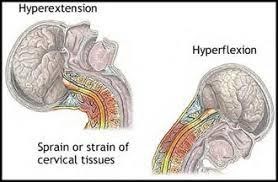Neck Pain
What is Neck Pain?
Neck pain affects about 30% of the US population each year. It often affects adults between the ages of (30 to 50 years. About 44% of people with acute neck pain will develop chronic neck pain. Nonspecific neck pain is sudden onset pain in the neck and upper shoulders area which is often due to minor sprains or bad posture. This is often referred to as simple neck pain because of mechanical stress placed on muscles and ligaments in the neck. This type of pain is more common in people who spend much of their day working at a desk.
Other causes of neck pain include:

Acute Torticollis – sometimes called “Wry neck”; a condition then the neck becomes twisted to one side and it is painful to move head back forward. Usually of unknown cause. Can be due to minor strain or sprain to muscle of ligaments. Often following a night of “Sleeping wrong”, poos sustained posture or carrying heavy loads on one shoulder. Pain usually resolves on its own without treatment.
Cervical spondylosis – degeneration, or “Wear and tear” of the vertebrae (Spinal bones) and the discs between the vertebrae becomes more common with age.
Cervical radiculopathy – occurs when vertebrae are misaligned, or muscle tension affects the root of a nerve and it is pressed or damaged as it comes out of spinal column. In addition to pain, symptoms may also include numbness, pins and needles, burning sensation and/or weakness of the arms/shoulders.
Risk Factors for Neck Pain
Studies suggests women are more susceptible for neck pain than men. Other factors including advanced age (>40 years old), poor posture, obesity, smoking, repetitive lifting, desk work and certain athletic activities increase risk of neck pain.
Signs & Symptoms of Neck Pain
- Pain and stiffness in neck that may spread to shoulders or base of skull
- Decreased range of motion
- Tenderness to touch throughout surrounding muscles
- Muscle spasms
- Headache (which can be accompanied by dizziness or jaw pain)
- Fatigue and irritability
Diagnosis of Neck Pain
Clinical assessment will check to ensure there is no damage to bones of spine, spinal nerves or spinal cord. Assessment of range of motion, posture, and strength at both arms will give information on potential cause of pain and necessary interventions. For more severe pain or traumatic onset of symptoms, imaging may be necessary to exclude significant damage to structures in the neck.
Typically, a clinician will ask when and how did symptoms begin, description of pain, pattern of pain (Time of day or provoking activities) and what limitations of daily life pain is causing. Origin of pain will be diagnosed based on presentation of symptoms as different types of neck pain will display different groups of symptoms.
How can a Physical Therapist Help with Neck Pain?
Goals of treatment with physical therapy will be to decreased tension, improve range of motion, improve posture and muscle endurance to maintain proper posture. Typically, with physical therapy treatment, most people make full recovery and improvement occurs within weeks. Your therapist may recommend a supportive pillow and educate you on proper sleeping positions to maintain a neutral spine throughout the night. Often with nonspecific neck pain, conservation physical therapy treatment and sustained strength with a home exercise program can relieve symptoms and help someone maintain little to no pain over long periods without need for surgical intervention



